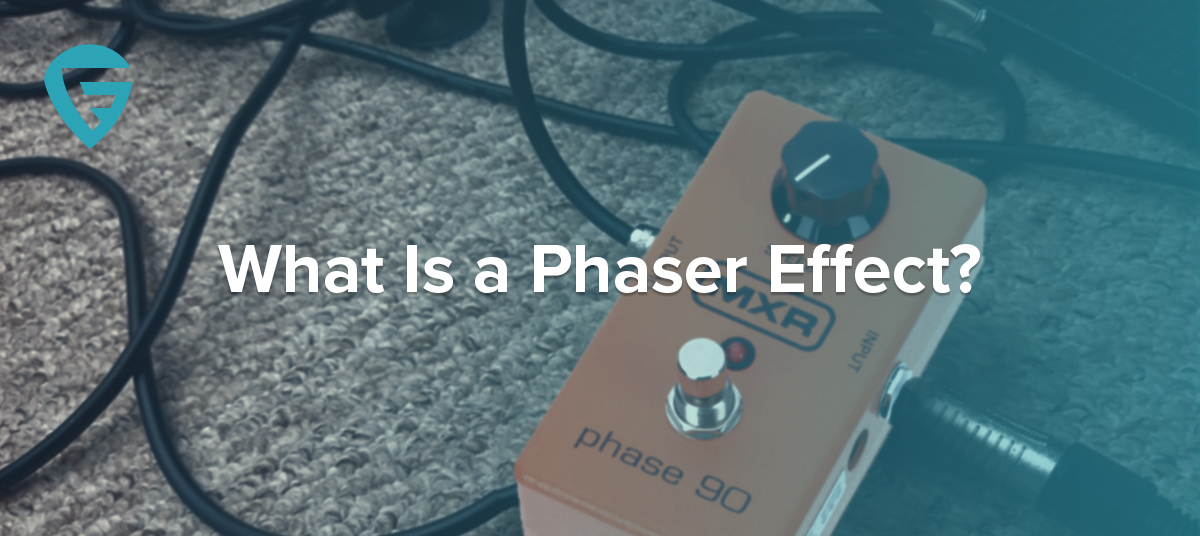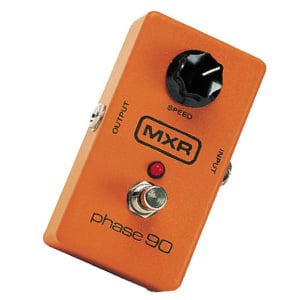- Home
- Instruments
- Gear
- Recording
- Lessons
- Reviews
- Blog

One of the first ‘advanced' effects that became popular when guitar effects pedals became a thing, were various types of filters. Frequency filters, or envelope filters as they are commonly known, work in a lot of different ways. That is why this single function is responsible for a variety of iconic effect types we use today. One of the more popular among these is the Phaser. What makes it so interesting is the way it filters out certain parts of the frequency range. Instead of just eliminating certain bands, it also plays with volume at the same time.
Today our mission is to give you a concise and understandable explanation as to what a Phaser or Phase Shifter pedal is. Hopefully, by the time we're done. you will have a good idea of what this effect can do for your tone and playing style.

You have probably heard this effect in action without even being aware of it. In simple terms, phase shifters give you an impression that the sound of the guitar is moving away and coming back in. Some describe it as a swirling effect that resembles a speaker being rotated around the listener in a circle.
With that said, it's worth mentioning that there are different types of phasers, and that each comes with its own set of features and controls. After all, this effect has been around for long enough that many brands have come up with their own unique solutions.
 For what appears to be a relatively complex guitar effect, the way it works is actually pretty simple. A basic Phaser pedal, which we will take as an example since it's the crudest form of this effect, does the following. The signal from the guitar being fed into the pedal get's split into two different signals. One is left untouched, but the other is processed by the pedal. That second signal gets phase shifted for 360 degrees until it reaches its original form. The two signals are combined at all times, which leads to them canceling each other out when the phase shifted section reaches the 180 degrees. That's when you hear that dip. After that point, the sound of the guitar starts to come back as the shifted signal falls back into phase with its untouched sibling.
For what appears to be a relatively complex guitar effect, the way it works is actually pretty simple. A basic Phaser pedal, which we will take as an example since it's the crudest form of this effect, does the following. The signal from the guitar being fed into the pedal get's split into two different signals. One is left untouched, but the other is processed by the pedal. That second signal gets phase shifted for 360 degrees until it reaches its original form. The two signals are combined at all times, which leads to them canceling each other out when the phase shifted section reaches the 180 degrees. That's when you hear that dip. After that point, the sound of the guitar starts to come back as the shifted signal falls back into phase with its untouched sibling.
The true shifting part of the story starts happening once you begin to mess with the controls on the pedal. Depending on the specific model you have, these controls can vary wildly. However, the core ones are usually always there. We're talking about Speed, Depth, and Resonance. What these do, is change the points at which the two signals we talked about cancel each other out, and where they are completely in phase.
Applying this type of changes can yield a variety of interesting results, which is why the Phaser pedal has been among the most used modulation effects for decades now. If you'd like to know how to use a Phaser, check out our short guide that tackles that subject in detail. ‘How To Best Use The Phaser Pedal'.
 One of the best things about the Phaser effect is that it fits in just about anywhere. If you get a model that has some additional range, you can create very subtle types of phasing. This way you are introducing the Phaser in a barely noticeable, while it still adds a layer of color to the whole song.
One of the best things about the Phaser effect is that it fits in just about anywhere. If you get a model that has some additional range, you can create very subtle types of phasing. This way you are introducing the Phaser in a barely noticeable, while it still adds a layer of color to the whole song.
There are those who will say that Phasers belong to this genre of music, or that one. Those people are wrong, and in most cases, they don't even have enough experience to make such claims in the first place.
Just like its the case with every other type of guitar effects pedals, choosing the Phaser is completely up to you. Naturally, there are differences in both the performance and features when you compare the top of the line model with an affordable one, but both of this will give you the same core effect. You should definitely choose the one you feel best attributes to your tone and style of playing.
Overall, Phasers are not that hard to understand, but they can bring a lot of flavor to your music. A lot of people use them every day, buy this is also among the last modulation effects on just about anyone's list. Truth be told, it's not the most impacting pedal you can add to your signal chain, but it's rather the cherry on the top that can definitely complete an already prospective pedalboard.
If you're still not convinced, we urge you to borrow one from your friend, if anyone has it, and just mess around with it for a couple of days. Chances are you will grow to like 'em.

Reader Interactions